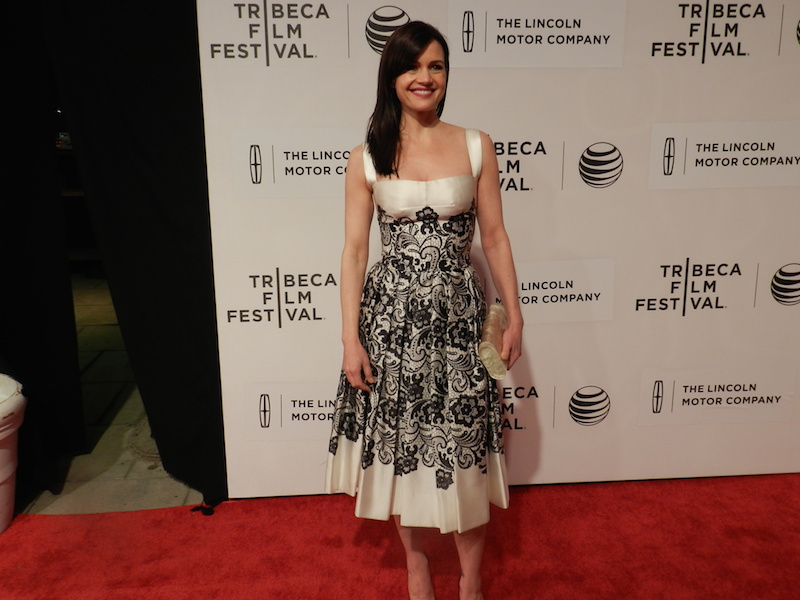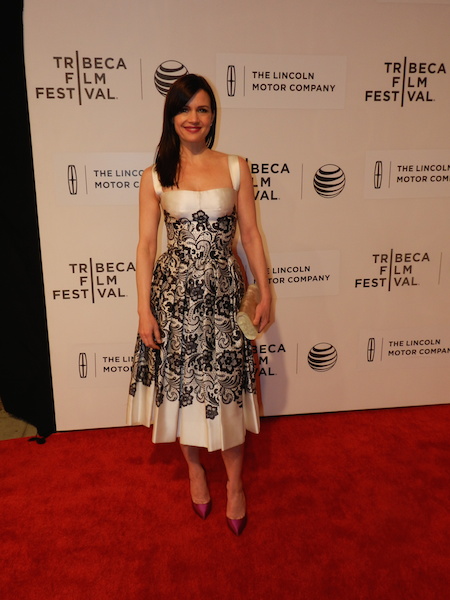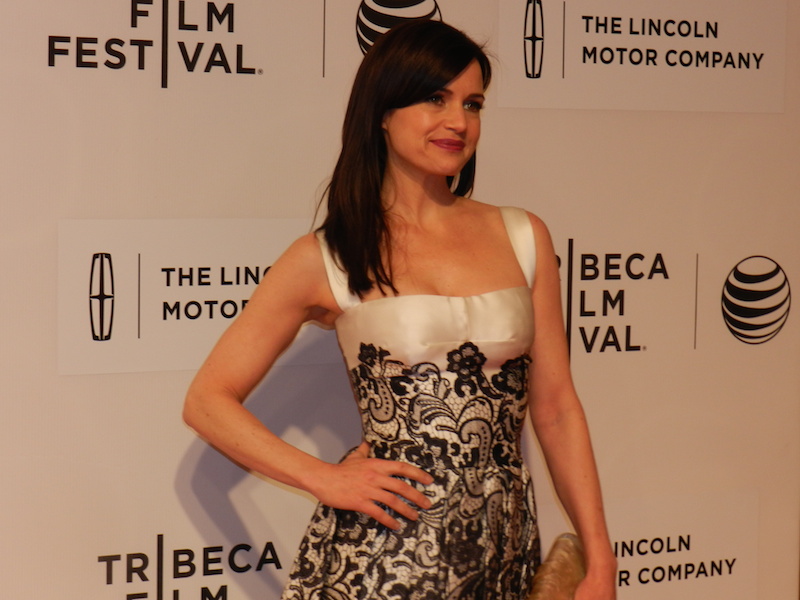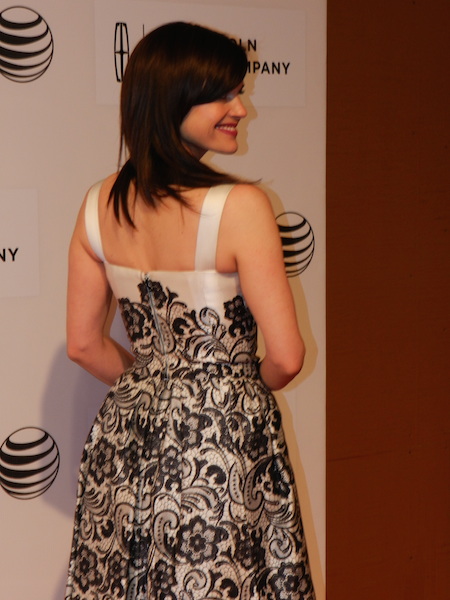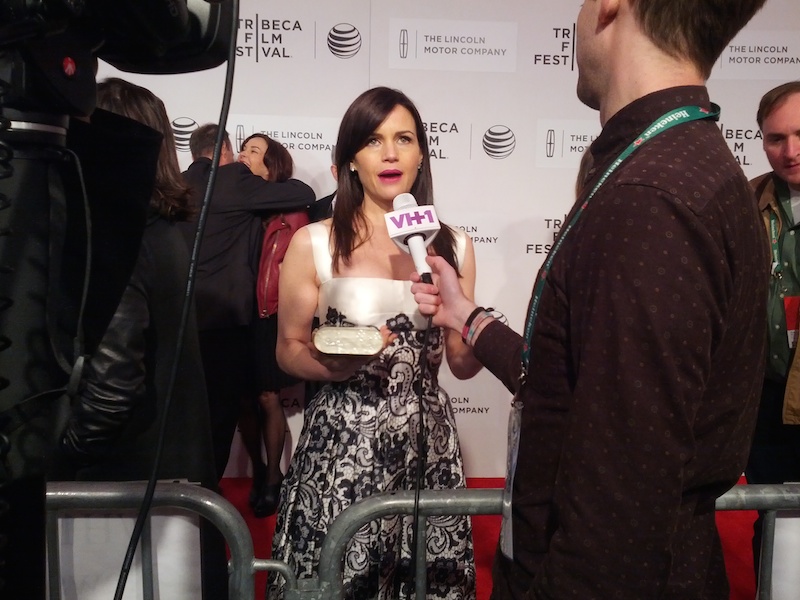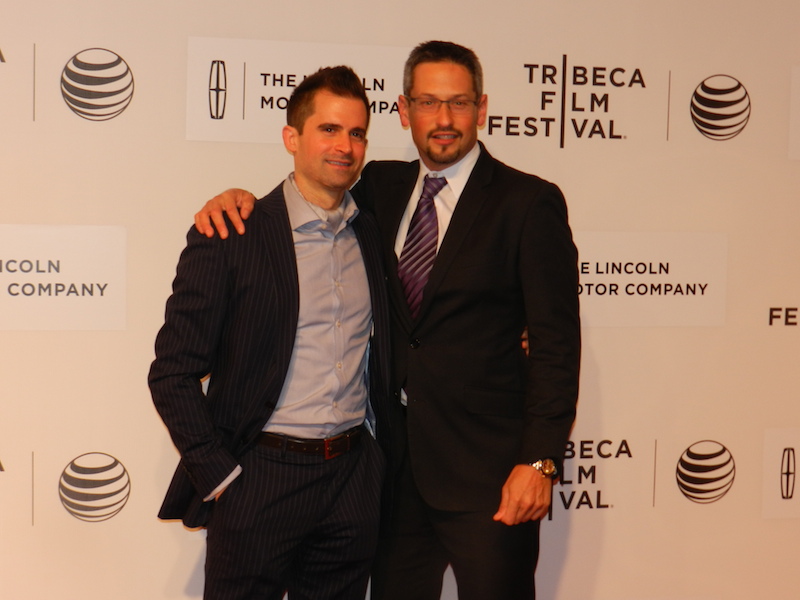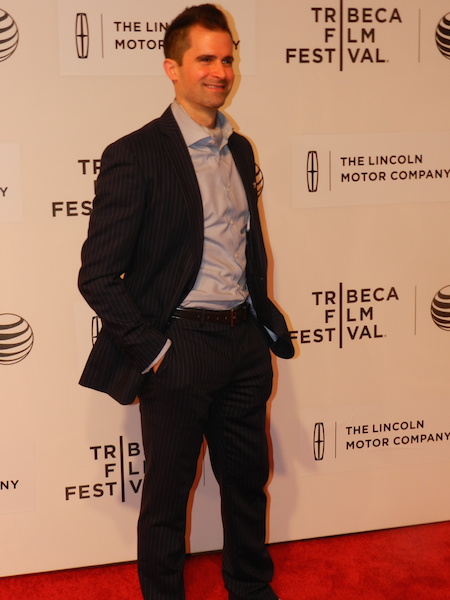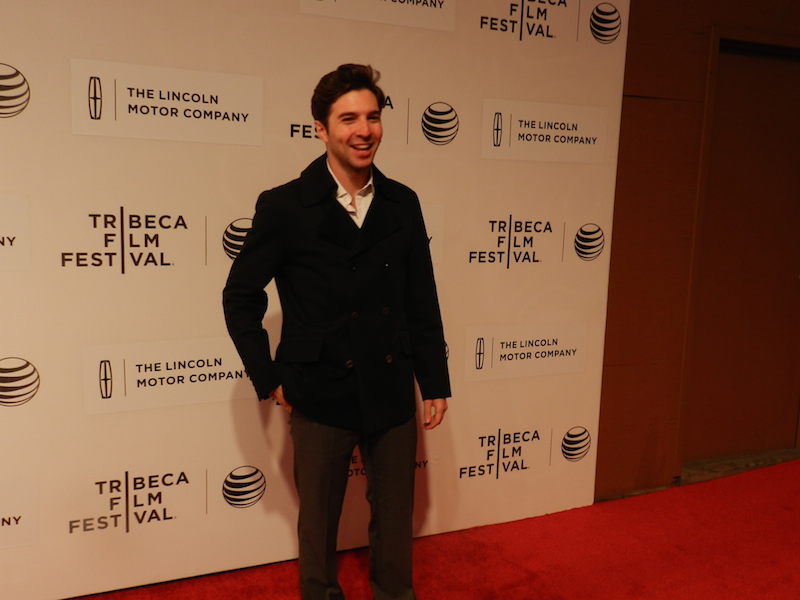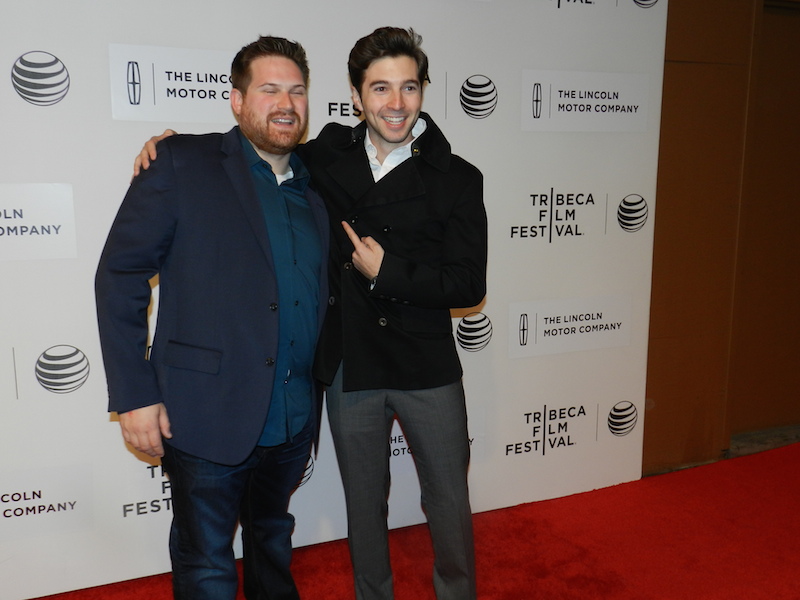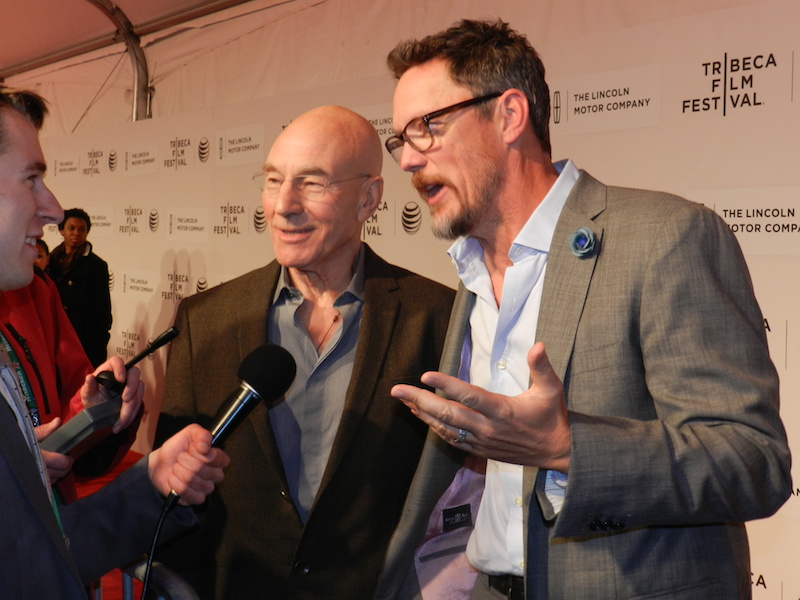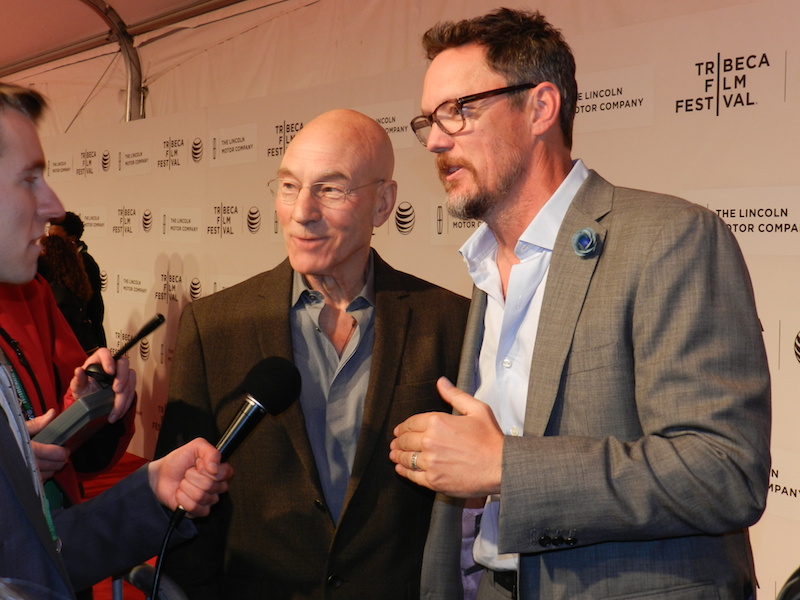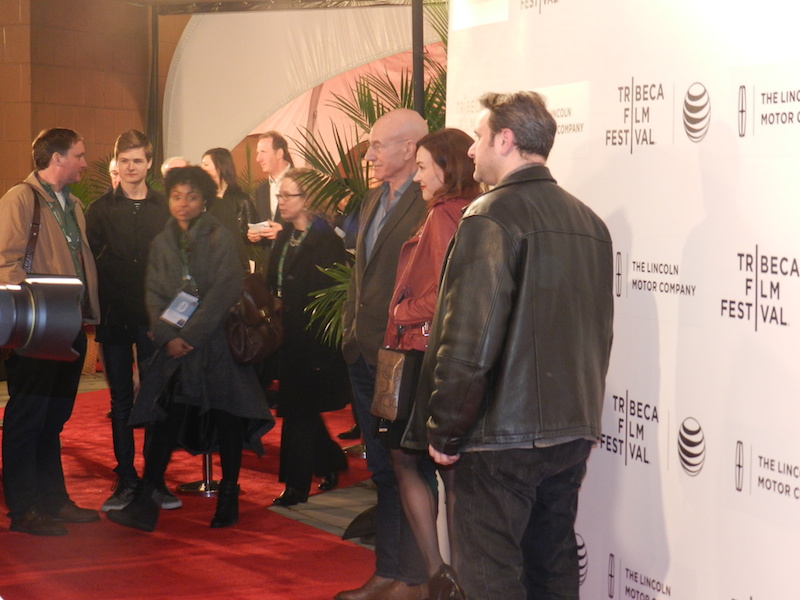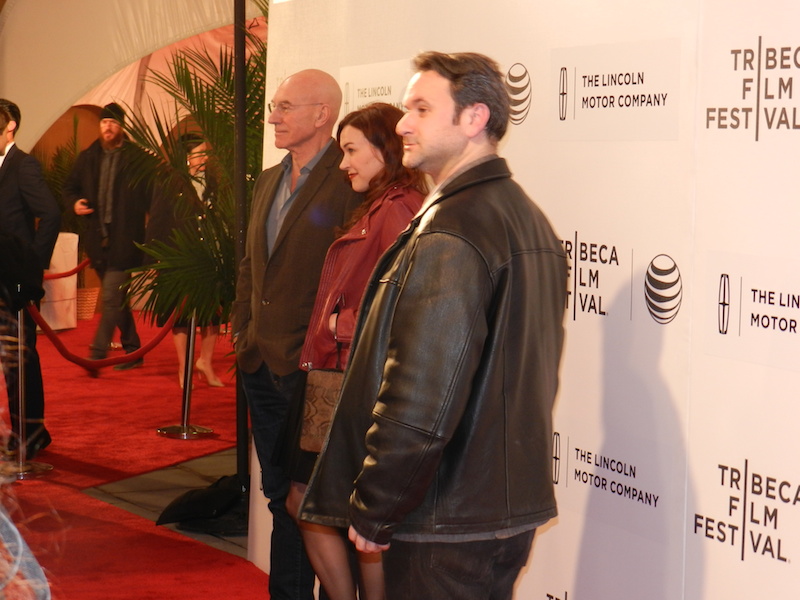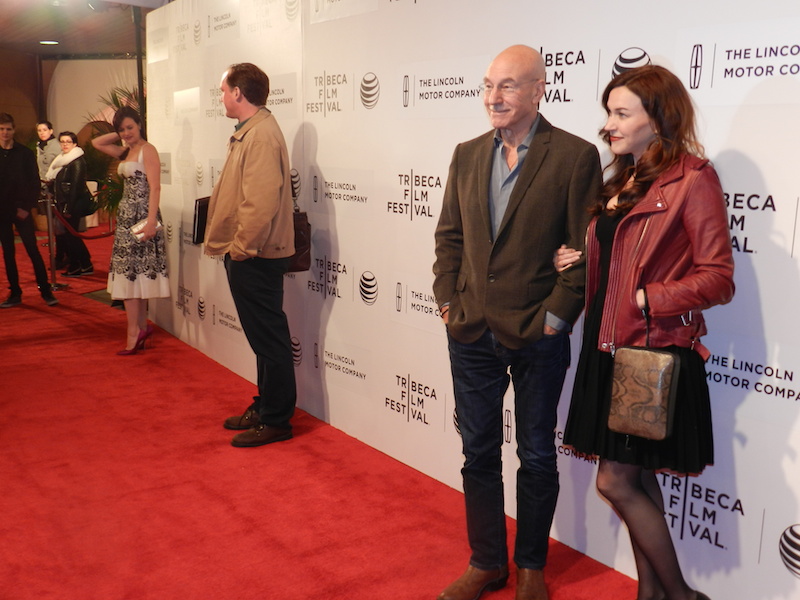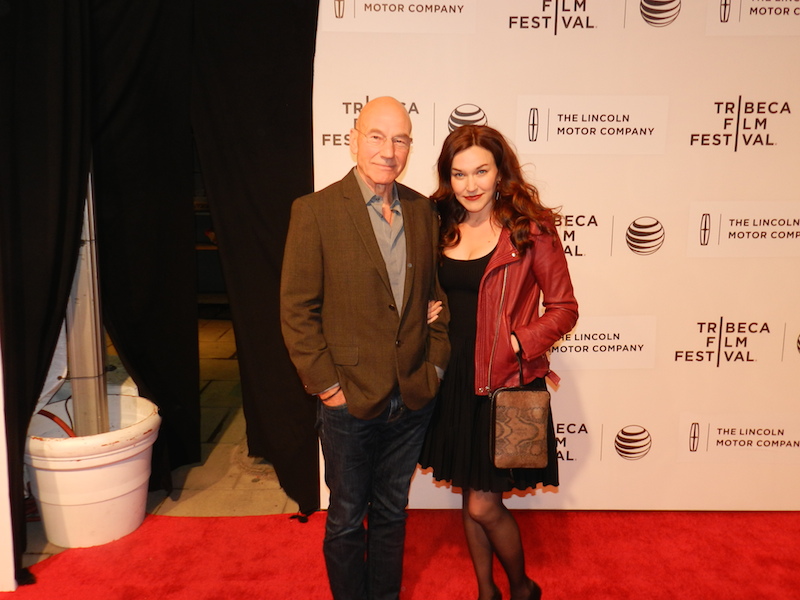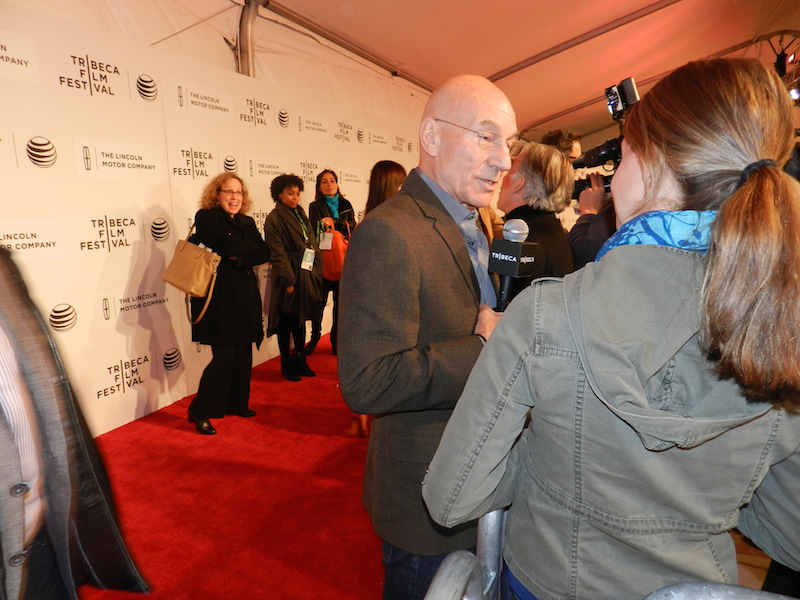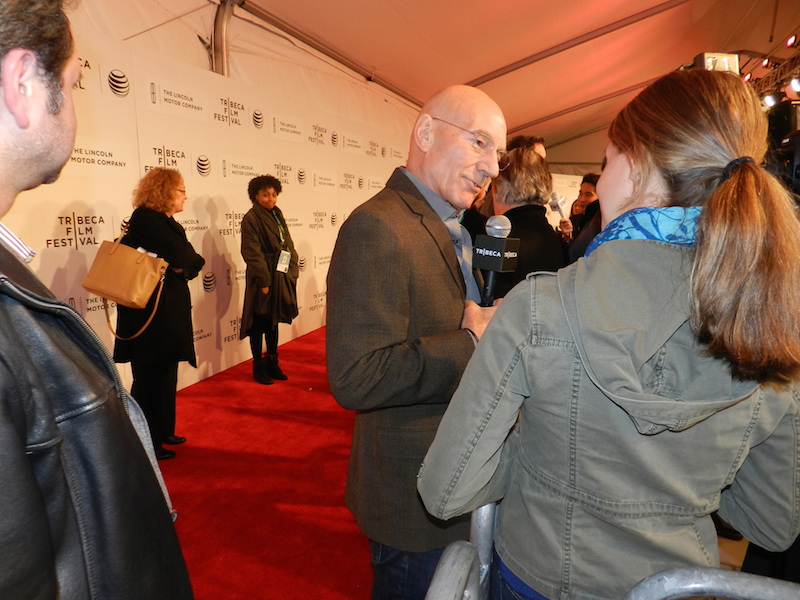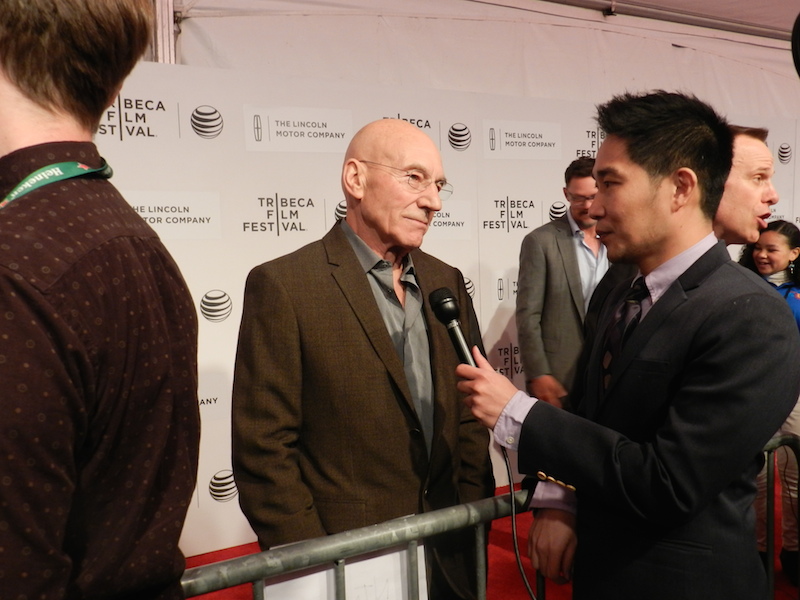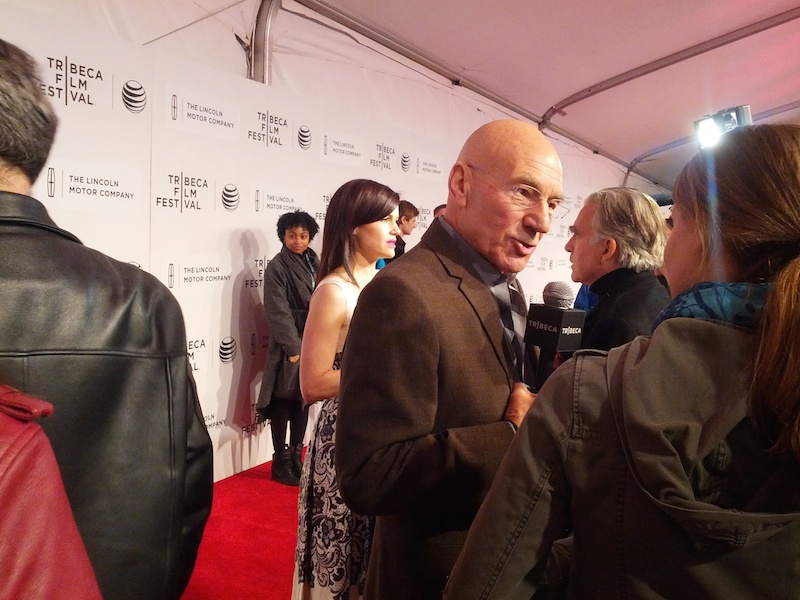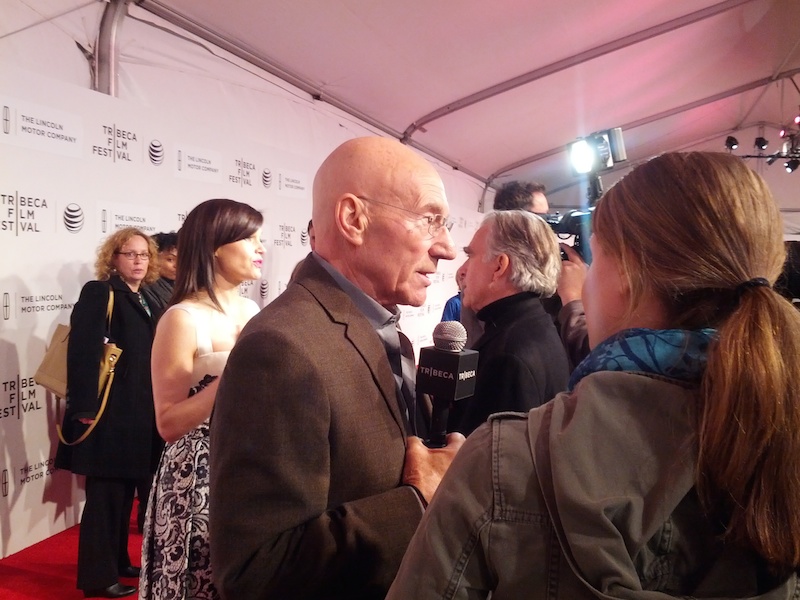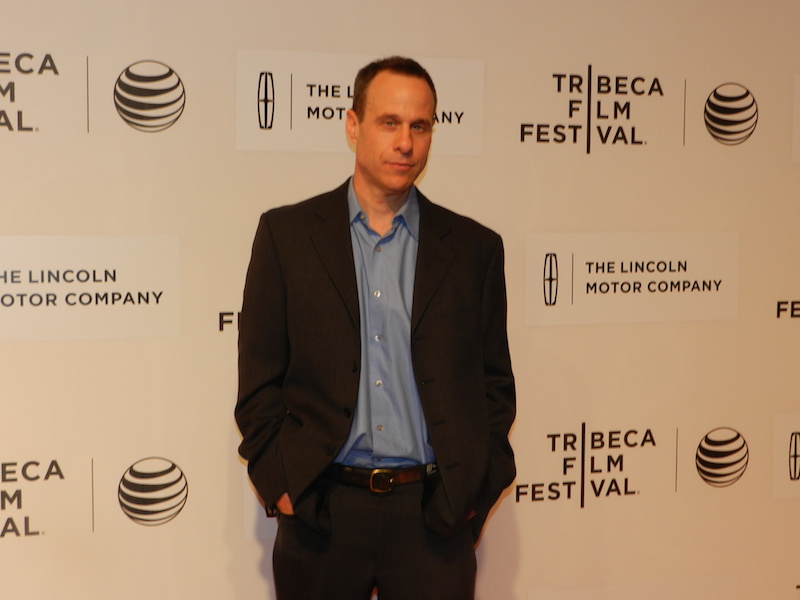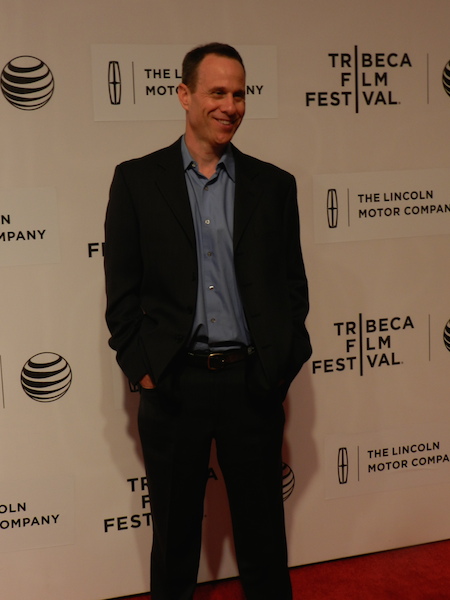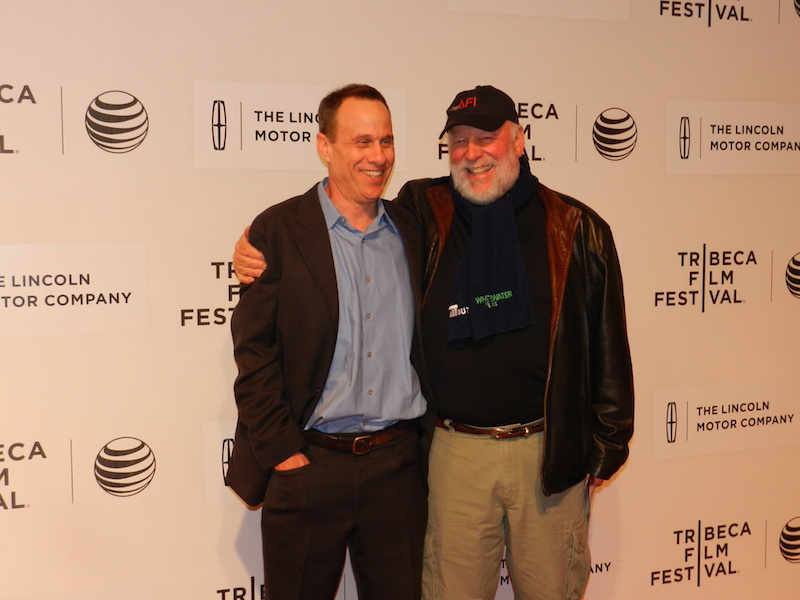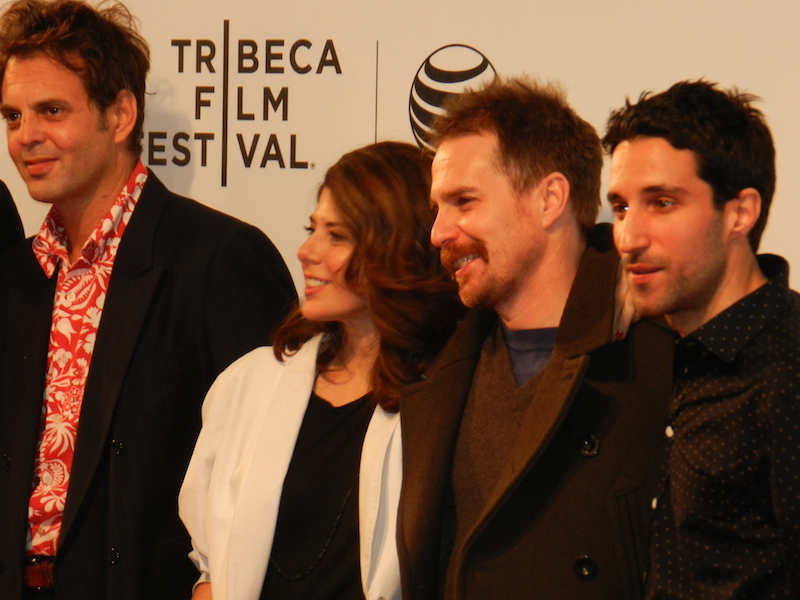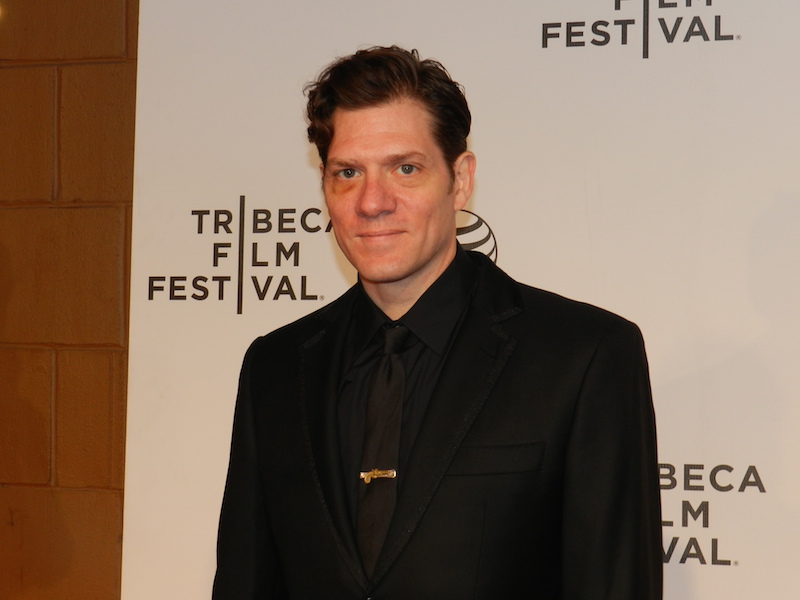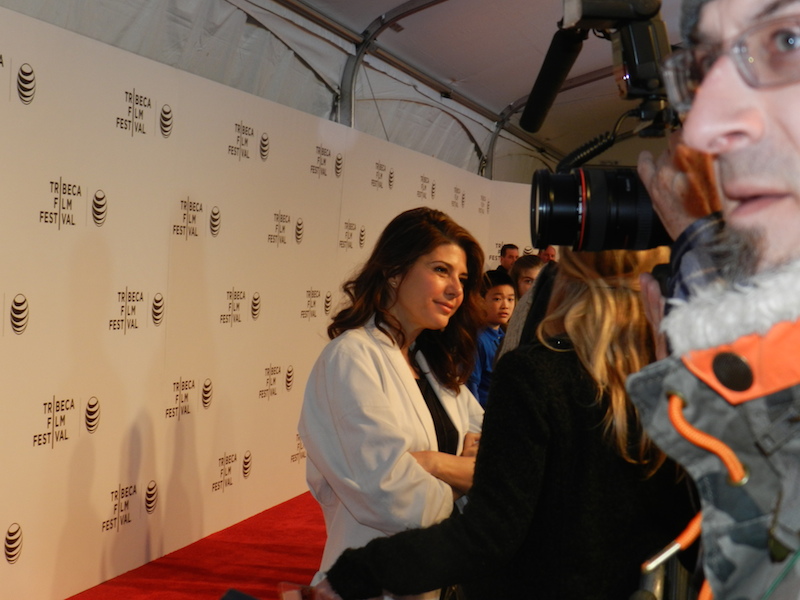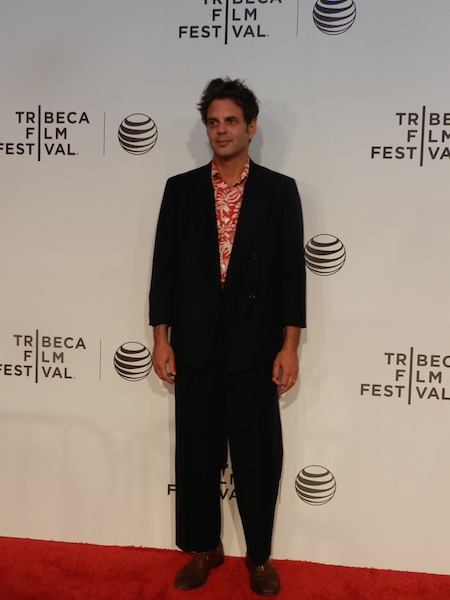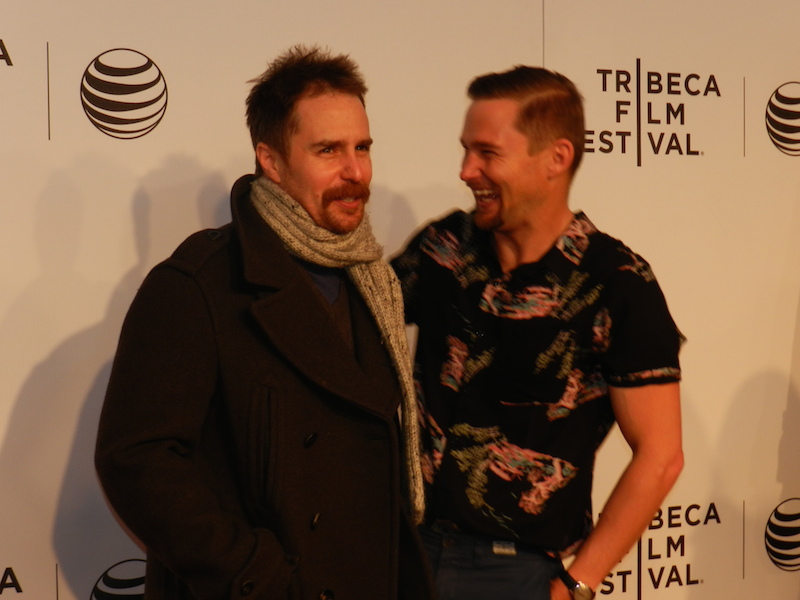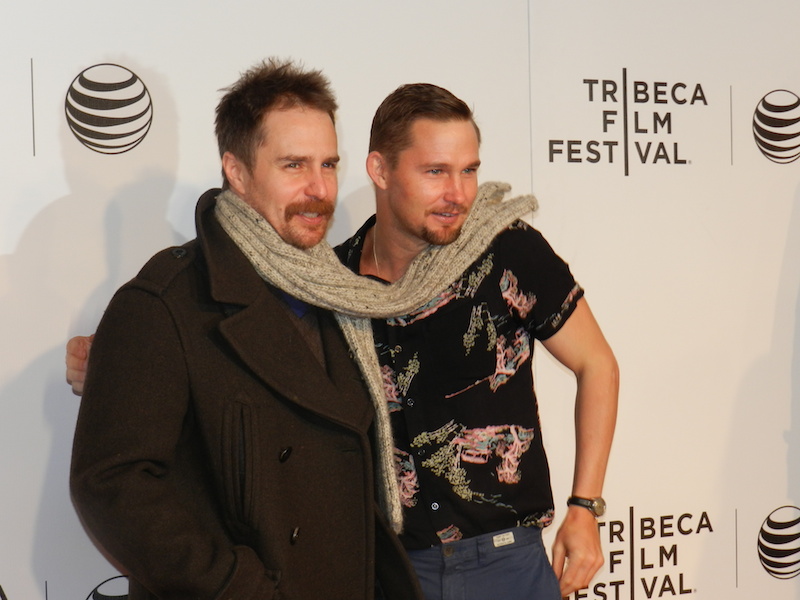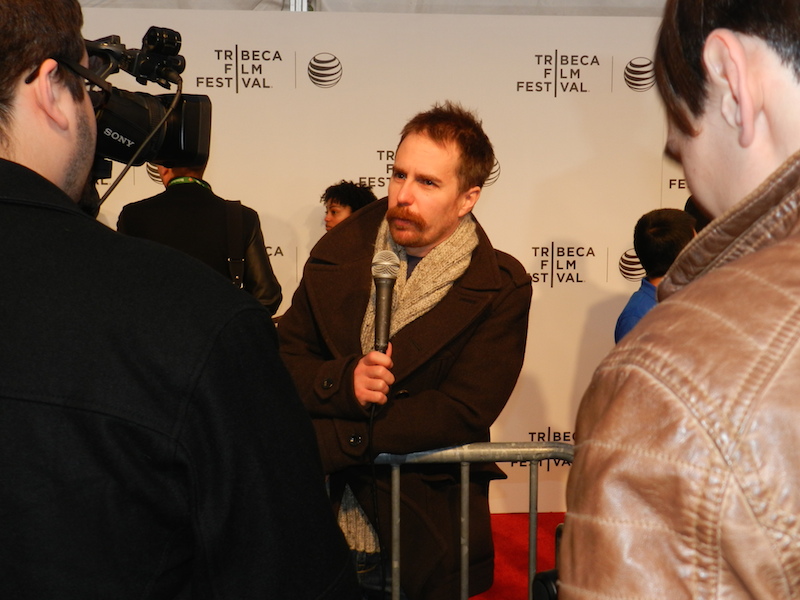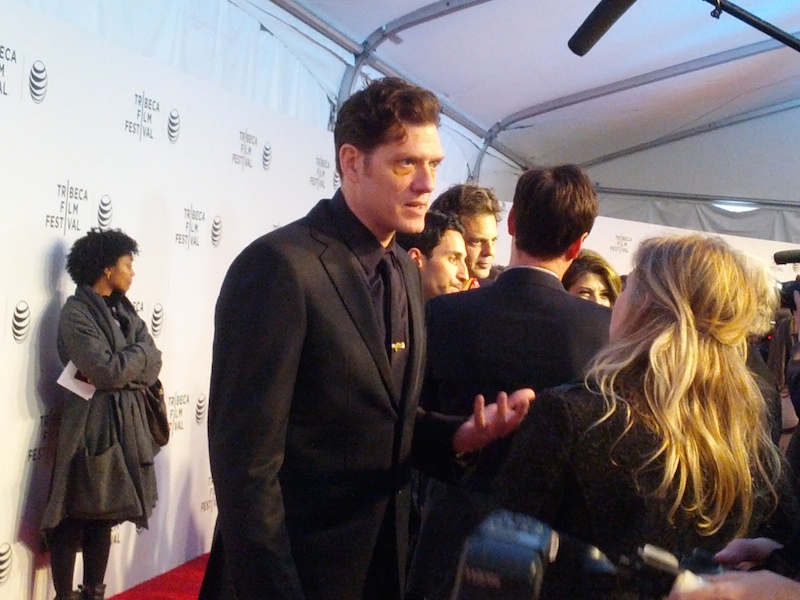Video of Sam Rockwell from the red carpet world premiere of Loitering with Intent at the 2014 Tribeca Film Festival:
Author Archives: Mike Hillman
Red carpet photos from the world premiere of Match at the Tribeca Film Festival.
Featuring:
- Patrick Stewart
- Carla Gugino
- Matthew Lillard
- Writer and director Stephen Belber
- More cast and crew
Red carpet photos from the world premiere of Loitering with Intent
Cast and crew includes:
- Director Adam Rapp
- Marisa Tomei
- Sam Rockwell
- Brian Geraghty
- Michael Godere
- Isabelle McNally
- Ivan Martin
- Natasha Lyonne
- Britne Oldford

Leave golf shirts on links; true polos have style
With temperatures again hovering around freezing in these parts, it is hard to believe the Modern Urban Gentleman was able to comfortably wear polo shirts last weekend. While it may feel like a distant memory now, the opportunity will return next week as spring continues its long tease. In anticipation of the polo proliferation, let us take some time to highlight the keys to making the polo shirt an item worthy of a gentleman.
Despite their casualness, a polo shirt and pair of khakis have become the summer uniform of the office set. The gentleman, of course, should deploy the polo shirt appropriately in professional settings: on very hot days, when traveling, and not for important meetings. The short-sleeved knit top is fit, however, for regular weekend service.
The polo shirt has its roots in tennis, where the long sleeves of the traditional tennis shirt were a hindrance to smooth play. French player René Lacoste guided function into form by producing the first jersey petite piqué and wearing it during the 1926 U.S. Open championship. After retiring, Lacoste exported his shirts, complete with crocodile logo, around the world, where they were adopted by polo players and acquired the name we use today.
There is surprising variety within the spectrum of polo shirt options. As always, the gentleman chooses only the correct style for the situation. The mistake seen most commonly around the water cooler may be the misconception that a golf shirt is an acceptable substitute for a true polo. The golf shirt is immediately recognizable by its loose fit and slight sheen. Those traits are entirely acceptable on the links, where they provide free swings and heat exchange. But if the gentleman finds himself in a setting where he wouldn’t wear Payne Stewart’s pants, why would he think it OK to wear his shirt?
Too many men allow the fit of a golf shirt to bleed over when sizing a proper polo shirt as well. As a follower of this column might expect, the Modern Urban Gentleman endorses a tailored fit that does not leave excess material to gather at the belt line. The length of the shirt’s tails dictates whether it should be tucked in, so purchase longer shirts for work, shorter for play.
When shopping for a polo shirt that will enhance the wearer’s fashion rather than shlub it down, consider two small but critical details. The first is the style of the buttons and collar. The polo shirt usually has two or three buttons, and the top one should always be open. (On a three-button, open the second button when the end-of-workday whistle sounds.) The ideal collar will have some structure of its own instead of laying limp on the collarbone. The standing collar will pull the lapel into a powerful “V” shape, much like on an open-collar Oxford.
The second — and most transformative — detail to look for on a polo shirt is arm length. Compare this Sears-catalog ready look to the suave ladies’ man seen here. The entire package looks exponentially better if the polo’s sleeves stop mid-biceps. This principle also applies to T-shirts, for those of you who are alcoholic, California-based writers. Whether you have the arms of the the late, great Ultimate Warrior or spaghetti-limbed Michael Cera, you’ll enhance what you’re working with by following this simple rule. (Pastel-colored strips of cloth tied around your arms, however, are no longer in style.)
Like most menswear, polo shirts come in a variety of materials and designs. Steer clear of athletic, performance-wear threads more suited to the clay or greens. Heavier, textured knits, like those from Tommy Hilfiger, are great for the mild days of spring and fall. The warmer months call for lightweight — but still structured — material.
The design trend for the past couple of years has been toward block colors. The pieced cotton polo from J. Crew is a winning example. Let your personal style be your guide to color and pattern, but keep the cardinal rule of men’s fashion in mind: only one visually noisy piece per outfit — so if you opt for a multi-color polo, mute it with neutral khakis or denim.
One more rule: keep the polo logo small. Some designers get carried away with their corporate sponsorship of the everyday gentleman. The Modern Urban Gentleman’s favorite polo is entirely logo-less. In fact, the Banana Republic luxe-touch line is heartily endorsed by this column.
A final thought on polo shirts is this: they have a short shelf life. Anyone who has held onto a polo for two years or more knows that the collar slumps, the color fades, and the effect is lost. Luckily, even the good polos are affordable relative to some of the other investment pieces in a man’s closet. Don’t try to get blood from a stone; retire your polo at the end of its service.
Let us all rejoice that the weekends of outdoor cocktail parties and polo shirts are upon us. Just make sure you unwind in style.
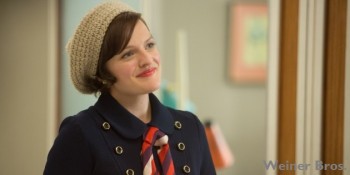
Season 7, Episode 1: ‘Time Zones,’ part 4
Kevin, I don’t know what twisted reality you live in where Linda Cardellini is preferable to Jessica Paré, but to each his own, I suppose. That point aside, I think you’re spot-on about addiction driving this show. And what is addiction other than a chemical need for self-validation? We find ourselves addicted to things that — at least at the start — make us feel good, smart, strong, powerful. Don has sought that feeling from liquor and women but always comes out feeling hollow. One addiction, though, leaves him fulfilled.
That’s why, Gabe, I don’t think Don’s goal is to get back into SC&P. Instead, he needs the work. I think being good at ad pitches is the only thing that has ever kept him centered and happy with himself. If he couldn’t keep doing that while on leave, he’d literally have nothing to live for. I also don’t know if Don was drunk in the last scene of the episode — just out in the cold. He was unable to shut out the unhappiness, so he just sat right in it and wallowed. In fact, Freddy was the only thing Don had control over this week. A moving sidewalk carried him, Graduate-like, through LAX. He rode in the passenger seat while Megan drove him around L.A. Then, he was back in someone else’s hands aboard an airplane, Manhattan-bound.
I agree with Kevin’s assessment that someone will die this season. I’m almost certain we’ll see the demise of Bert Cooper, but there must be something more shocking. There’s a growing sentiment in corners similar to this one around the Internet that the bull’s-eye is squarely on Megan. Last season, Megan wore a T-shirt famously connected with Sharon Tate — you know, the famous actress who lived in the canyon outside Los Angeles, where she was murdered by the Manson Family after having a final meal at El Coyote Cafe. The references are a bit heavy-handed, but things are not looking good for the third Mrs. Draper.
I’ve read some analysis of how Mad Men is shifting its focus from one generation to the next — it’s no longer about the Boomers’ parents, but about the Boomers themselves. The first episode is not quite evidence of that — we’re missing Sally and anyone else under age 25 — but the 1970’s are clearly on the horizon. The Mad Men universe is shifting into the timeframe in which the primary demographic of AMC viewers remembers as their formative years. I wouldn’t be surprised to see the series retroactively framed not as Don’s story — not even as Peggy’s story — but as Sally’s story (for perspective, Sally would turn 60 this month). It took eight minutes to bring Don into the story in the season premiere, and I think his fade into the background will continue.

Season 7, Episode 1: ‘Time Zones,’ part 1
As Mad Men enters the first half of its seventh and final season, a panel of viewers here at Curiata.com will engage in a roundtable discussion following each episode. Check back throughout the week for new entries in the series.
I caught up on the first six seasons of Mad Men over the last year, so this was the first episode I’ve ever watched along with the rest of the world. It’s exciting to finally be on the same page and not have to avoid spoilers. I settled in last night with a glass of Don’s drink of choice, Canadian Club, and realized what a terrible judge of whiskey he is.
It was great to see Freddy Rumsen again. That opening scene was intense, and the implication that he was speaking directly to us, the viewers, about something bigger than the Accutron watch was obvious. It’s also not a coincidence that the writers used a recovering alcoholic to be Don’s mole in the agency. Don’s own alcoholism has always been a simmering issue, but it came to the surface last season and is laid out as the central struggle of this one.
Viewers seem primed to anticipate one of two endgames for Don: he quits the bottle and returns to to form at the top of the advertising game, or he plunges to his death from his penthouse suite or the corner office of SC&P. I think Mad Men has built its reputation on too much subtlety to go either of those routes. I expect Don will enjoy a few sober weeks before crashing harder than he ever has before.
Don’s end will not be miraculous or suddenly tragic. Instead, he will fade into oblivion, the way we all will, as the world moves past him. I expect Peggy’s breakdown at the end of last night’s episode will come to be seen as the point at which she turned ruthless. She’ll find a way to get rid of that new guy (Lou?) before the end of our first set of seven episodes, and 2015 will bring the final showdown, when she seizes creative control of the agency and pushes Don into the role Roger has played for so long.
It was disappointing not to get any of sassy Sally last night, but we also have joint custody of the kids and can only see them in half the episodes. I expect another Don and Betty backslide this season, and I wouldn’t be surprised to see them end up in an uneasy, sunset years resigned-to-fate relationship as the lights finally dim next year.
I’m interested to see what you all thought of last night’s show and where we’re headed for the remaining 13 hours of the series. One final thought: will Megan or any of Roger’s dalliances ever grow nipples?

Tribeca Film Festival: Spotlight Section
Curiata.com will be covering the 2014 Tribeca Film Festival live from New York City. Vote for which films we should screen and review from the Spotlight Section by commenting on the Facebook post below.
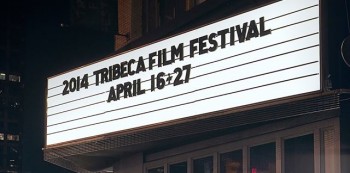
Tribeca Film Fest: World Narrative Competition
Curiata.com will be covering the 2014 Tribeca Film Festival live from New York City. Vote for which films we should screen and review from the World Narrative Competition by commenting on the Facebook post below.

Man up: Join community, volunteer time
The Modern Urban Gentleman character is a fine vehicle to express thoughts about fashion, travel, brewing, or any of the other elements that enrich one’s own life. Today, however, I am stepping out of that voice to share my thoughts about and experiences with an aspect of being a gentleman that exists outside of “self.”
In the first edition of this column, I defined a modern urban gentleman, in part, as a man who is “engaged in the community and the world.” That means following current events, surely, as well as formulating informed opinions about those events. It means fighting the battles for hearts and minds in support of the ideals we understand to be at the root of our opinions. But it means something more, something deeper, something — for me at least — much more difficult.
It means giving of oneself to make a tangible difference. It means walking the walk instead of just talking the talk.
In the past several weeks, I have had two opportunities to volunteer and engage with the community around me. In both instances, I interacted with students in classrooms, sharing insight, discussion, or just a few minutes of my time with them. Those moments reinforced to me the vital, unavoidable role a gentleman plays in the cohesion, advancement, and success of our society.
The American Literacy Corporation, based in Harrisburg, Pa., is a nonprofit group that organizes a weeklong campaign to recruit 500 men to read to area school children during the school day. I participated in this year’s 500 Men Reading Week by visiting three classrooms at the Foose Elementary School in Harrisburg. I volunteered because I could come up with no good reason not to — hardly the most inspiring motivation, but an effective way to kick-start a part of my self-improvement that has lagged behind the rest.
The importance of the 500 Men Reading Week was really driven home to me when I learned that only 18.3 percent of elementary and middle school teachers are male. Even more startling, only 2.3 percent of kindergarten and preschool teachers are men. Combine that with the particularly high rate of single-family households in the Harrisburg School District and I realized I may have been the only male role model those children would have that day. I do not yet have any children of my own, and despite having two younger brothers, the weight of that responsibility was a new experience.
The novelty of having a man in the classroom was evident, as the kids were so eager to engage me in conversation about everything from the dog in the book I was reading to whether my knit tie was actually a sock (complete with an entire class of second graders touching the material just to be sure). Regardless of their intelligence or boisterousness or attention span, those kids knew something fun and good was happening that day. In the end, I settled on feeling pride in having all those pairs of eyes looking to me for guidance.
In my other life, as a workaday public servant, I am the chairman of my organization’s Diversity and Inclusion Council. Owing to that role, my fellow officers and I were invited to participate in the annual Diversity Day at Mechanicsburg Area Senior High School. The event was put on by the school’s student-driven Diversity Club. The club brought together individuals who contribute to the diverse tapestry of life across south-central Pennsylvania, whether through vocation, avocation, or cultural background.
My colleagues and I presented a crash course on “Civil Rights Today.” I talked about the definitions of diversity and civil rights and then, in the ultimate manifestation of colorblind casting, I played the role of Barack Obama in a skit that emphasized the continuing relevance of the struggles of civil rights titans including Susan B. Anthony. A. Philip Randolph, Linda Brown, and Matthew Shepard.
We presented to four classes, ranging from sophomores to seniors, and were treated with nothing but respect. Sure, a few nodded off and some eyes glazed over at various times, but when they refocused, they genuinely tuned in and engaged the material at some level. The relevance of the murder of Shepard for being gay particularly resonated in the cyber-bullying reality of modern high school. As we found our rhythm by the third class, the presentations were ending with spirited debate among the students, with each individual’s personality shining through.
I walked out of that high school last week not feeling like I changed any lives, but feeling like I was able to make the tiniest ripple in the mental and social development of about 120 teenagers. By breaking the monotony of their day, as well as my own, our brains and our spirits were primed to welcome a new perspective on this shared journey we are traveling.
I don’t tell these stories today to draw attention to myself. The truth is, I have ignored this aspect of being a gentleman for far too long, and will surely skip out on far too many opportunities to embody the spirit of community in the future.
But it is essential to reflect on this often overlooked facet of what it means to be a man. I hope my words today will move just one person to say yes to an invitation to spend time doing something for the greater good. A fine gentlemanly life holds no true enjoyment without a rich, vibrant, empowered community to share it with.

HIMYM favorite episodes: ‘Lucky Penny’
After nine seasons, the final episode of How I Met Your Mother airs in the United States on Monday, March 31. Curiata.com is reliving the series this week by looking back at our favorites of the 208 episodes.
I was late to the How I Met Your Mother game and, in a rare instance for me, I binge-watched the first four seasons over the summer of 2009. The whiplash of those first 88 episodes was perfectly encapsulated in the frenetic tale told in the second season episode “Lucky Penny.”
Ted Mosby, architect, has a job interview in Chicago but but he and Robin are late for their flight. As they try to wrangle their way on a plane, the couple recounts the series of events that led to their late arrival: Ted had a court date because Barney ran a marathon because Marshall broke his toe because Robin startled him because Lily was shopping for a wedding dress because Ted and Robin ate hot dogs because Ted found a lucky penny. Whew.
As I look back on the series, many high point stand out for me, but I was surprised how many were captured in this single episode. Barney’s subway collapse and Robin and Lily’s car-alarm chorus are two of the great moments in HIMYM history. “Lucky Penny” was situated in the middle of the greatest run of the series, the second season that came to form the heart of the show.
If you or someone you know has never seen HIMYM, “Lucky Penny” is a perfect introductory episode. It is a self-contained story that subtly communicates all the background information a new viewer might need to understand the characters and plot. Further, “Lucky Penny” has nearly all the elements that make HIMYM great: character development, intersecting plot lines, non-linear storytelling, and a perspective of how the events of the episode fit into the overarching story arc that led Ted to The Mother. Indeed, we learn at the end of the episode that had Ted made his flight and gotten the job he wanted, he would have had to move to Chicago three months later, taking him away from the future love of his life.
If there is one characteristic of HIMYM missing from this episode, it is a powerful emotional moment. The series knows how to do these especially well, from the blue French horn to the several break-ups throughout the series to the difficult realities of new life and abrupt death. In retrospect, we learn just how emotionally poignant the episode was, though. Ted never forgets how important this series of events was to the course of his life, commemorating that lucky coin by naming his first-born child Penny.
There are two types of sitcoms: those that stuff as many jokes as they can into 30 minutes of television and fade into oblivion, and those that use comedy to construct human stories we connect to. “Lucky Penny” captures the zeitgeist of high-quality, mid-2000s sitcom television.
Best Line: “Here’s how you run a marathon. Step one: you start running … There is no step two.”
Best Cutaway: Marshall’s marathon training
Mother Lore: Ted and The Mother name their daughter Penny. Also, as told by Future Ted in this episode, “But that’s not what happened. They didn’t reschedule. They hired someone else. And as it turned out, three months later, that guy ended up having to relocate to Chicago. Kids, funny thing about destiny, I thought I was destined to get that job. But I was wrong. My destiny was to stay in New York. Because if I hadn’t, I never would have met your mother.”
